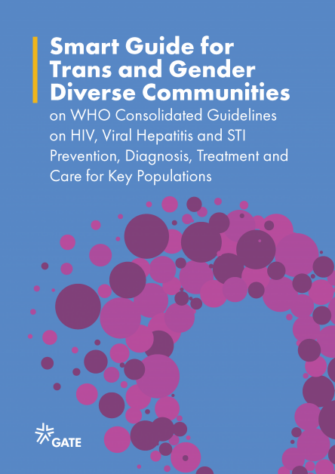What are the WHO Consolidated Guidelines?
In 2022, the World Health Organization (WHO) published the Consolidated guidelines on HIV, viral hepatitis and STI prevention, diagnosis, treatment and care for key populations. They provide guidance for public health and rights-based responses to HIV, viral hepatitis, and sexually transmitted infections (STIs) for key populations. Key populations are defined as men who have sex with men, sex workers, people who inject drugs, trans and gender diverse people, and people in prisons and other closed settings. They are defined as “key” given that they are disproportionately impacted by HIV, and 70% of new HIV infections in 2021 occurred amongst key populations and their partners. This is due to structural barriers, including criminalization, stigma, and discrimination, which increase vulnerability and limit access to services. Key populations are also disproportionately affected by STIs and viral hepatitis and have broader health needs.
These guidelines gather the most recent guidance and recommendations related to HIV, viral hepatitis and STI prevention, diagnosis, treatment, and care for key populations. They promote evidence- and rights-based interventions to improve trans and gender diverse people and other key populations’ access to health and human rights. The guidelines can be used by trans and gender diverse and other key population-led organizations to advocate for rights and evidence-based HIV, STI, and hepatitis programs, and by managers, policymakers, donors, and others to inform rights and evidence-based HIV, STI, and hepatitis policies and programming.
Why is there a Smart Guide?
GATE’s Smart Guide summarizes and discusses the WHO guidelines’ key recommendations for HIV, viral hepatitis and STIs for trans and gender diverse people and can be used as a tool when advocating for rights-based services.
For more in-depth information on any of these topics, you can refer to the full WHO Consolidated Guidelines document. WHO has also produced a Policy Brief on the guidelines, and one for each key population (expected to be published in mid-2023), which summarize newly added recommendations and lists recommended interventions.
This Smart Guide has been adapted for the trans and gender diverse community from The Smart Sex Worker’s Guide to the WHO Consolidated Guidelines on HIV Hepatitis and STI Prevention, Diagnosis, Treatment and Care for Key Populations, which was produced by the Global Network of Sex Work Projects (NSWP).
This Smart Guide was developed with thanks to funding from the Robert Carr Fund.
Trans and Gender Diverse Involvement in the Development of the Guidelines
The 2022 guidelines are an update to WHO’s previous 2014 and 2016 Guidelines on HIV prevention, diagnosis, treatment and care for key populations and include existing, updated, and new recommendations and good practice statements. New recommendations were informed by reviews of scientific evidence and a community values and preferences study conducted by four global key population-led networks: Global Action for Trans Equality (GATE), the Global Network of Sex Work Projects (NSWP), the International Network of People Who Use Drugs (INPUD), and MPact Alliance for Gay Men’s Health and Rights (MPact).






